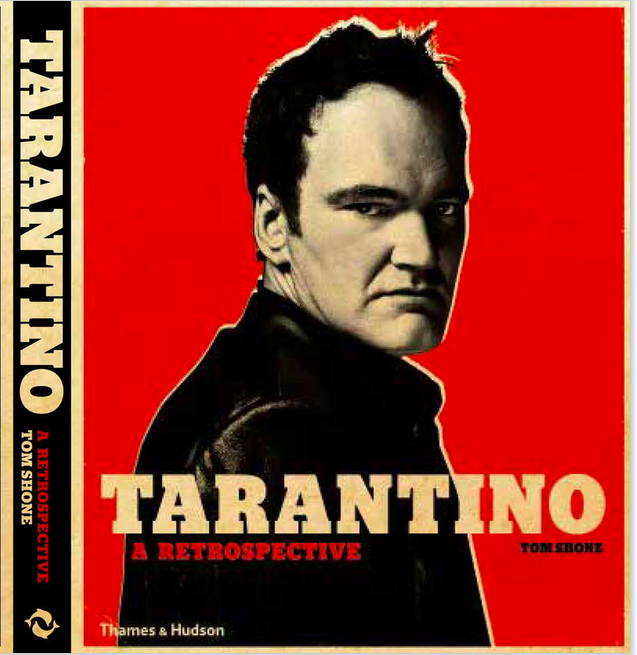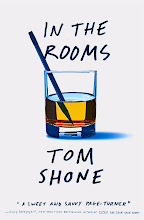
From the longer cut of my Christopher Nolan profile:—
MICHAEL MANN: “He works within the system here in a very commanding way. He has large ideas. He’s a complete auteur. He invented the post-heroic superhero. He can come up with an idea for a science fiction heist inside the moving contours of a dreaming mind and he had the boldness and audacity to have that singular vision and make it happen. His work is very, very focused and it’s truly his own. He operates very much in the present, in the now. We’re living in a post-modern, post-industrial world with decaying infrastructure. Many feel disenfranchised. Seclusion is difficult. Privacy is impossible. Our lives are porous. We swim in a sea of interconnectedness and data. He directly deals with these intangible but very real anxieties. He’s tuned into the reality of our lives, our imagination, our culture, how we think, how we try to live. The quest to understand that and to tell stories from there, that is a central motivator for him, I think.”
ANNE HATHAWAY: "We see him very, very calm. You never really see
him blow a gasket or get frustrated... usually by the time we come
to set the puzzle is solved for him. For
the both times I've worked with him, he's totally open to being surprised by
things and discovering things on set and certainly he's always shown me amazing
generosity as a director in terms of letting me find me, find my way through
the part. Yeah, he has the whole film in
his head before we start shooting. I remember when we were doing the scene in
Batman where I pull my mask back and it becomes the cat ears for the first
time. Chris came up to me before we shot
the one and I guess we you're working a few weeks at that point, but we
haven't, and we're having a great time but we were way more bonded at the end
of experience than we were at the beginning.
It's just kind of the way it goes. He came up to me and made a point of saying
to me, "Now listen, I'm going to do a lot of takes on this one just
because I have the way I want it to look in my head for so long I'm not going
to be able to move on until I get exactly right. It's a complicated shot. There's a lot of things at work here. The camera has to go, the prop has
to work, you're mask has to go up. He just took me through
it, and he said, "So if I do it a lot of times, I don't want you to get
discouraged, it's not you.' I
just thought it showed a great emotional awareness, on his part. He didn't have to do that, it was so generous
of him to make sure that I wouldn't take it personally."
ZACK SNYDER: "I
think everyone wants their movies to be successful but I think there's sort of
what Chris has been able to generate with the movies that he has made,
including the Batman movies I think, is original work that doesn't rely on the
whims of pop culture but in informs pop culture. Which I think is
the real trick of any filmmakers not to be a slave to trends but to then create
those trends. They look to you for their direction. The Batman movies
came out of nowhere. That take, that tone, came out of nowhere. If
I had told you it's going to be a super-serious Batman movie that treats Batman
like this mythological figure that is completely based in reality. You'd be
like, okay that sounds like I don't know if that's going to work."
NICOLAS ROEG: “His films have a magic to them. They’re like incidents in one’s life; some things happen swiftly and some things take a long time to reveal themselves. They're marvelously disguised. Memento has this backwards-running time scheme, and yet you automatically find yourself applying the situation to oneself, to one’s daily life, which is very strange. The slipperiness of time, especially when it involves memory, that feeling of 'it's all true... but it wasn't like that', he’s got that on film, somehow. It’s a very rare thing. People talk about 'commercial art' and the term is usually self-negating; Nolan works in the commercial arena and yet there's something very poetic about his work."
MATTHEW MCCONAUGHEY: "Chris knew this was something different than he’d done before. It had all and more of the concept, scope and awe you may expect, yet it’s about family, father’s and daughters, genuine relatable challenges, with real humans rather than archetypes. Chris has always created an original world on screen as well as the rules within that world, but I think this story if more personal to him, more intimate, more flesh and blood. ...I’ll never forget the days on the glacier in Iceland. Cold, sleet, snow, altitude, two helicopters, a vast desert of frozen earth and caverns, over a hundred crew members in action, the combined elements made for a tremendous affair that many people might have considered overwhelming and dire. Not Chris. Chris was in his element. He was on fire. His focus, his stamina, he was conquering something- I remember looking at him, he looked 20 years younger, his eyes were bluer, his hair blonder and standing taller, a Nordic soul emanating, like his feet were slightly off the ground in a state of levitation. On this glacier, in the most extreme natural and technical conditions you could imagine, it was as if he was some transmigrant incarnate — like he’d been there before."










.jpg)























